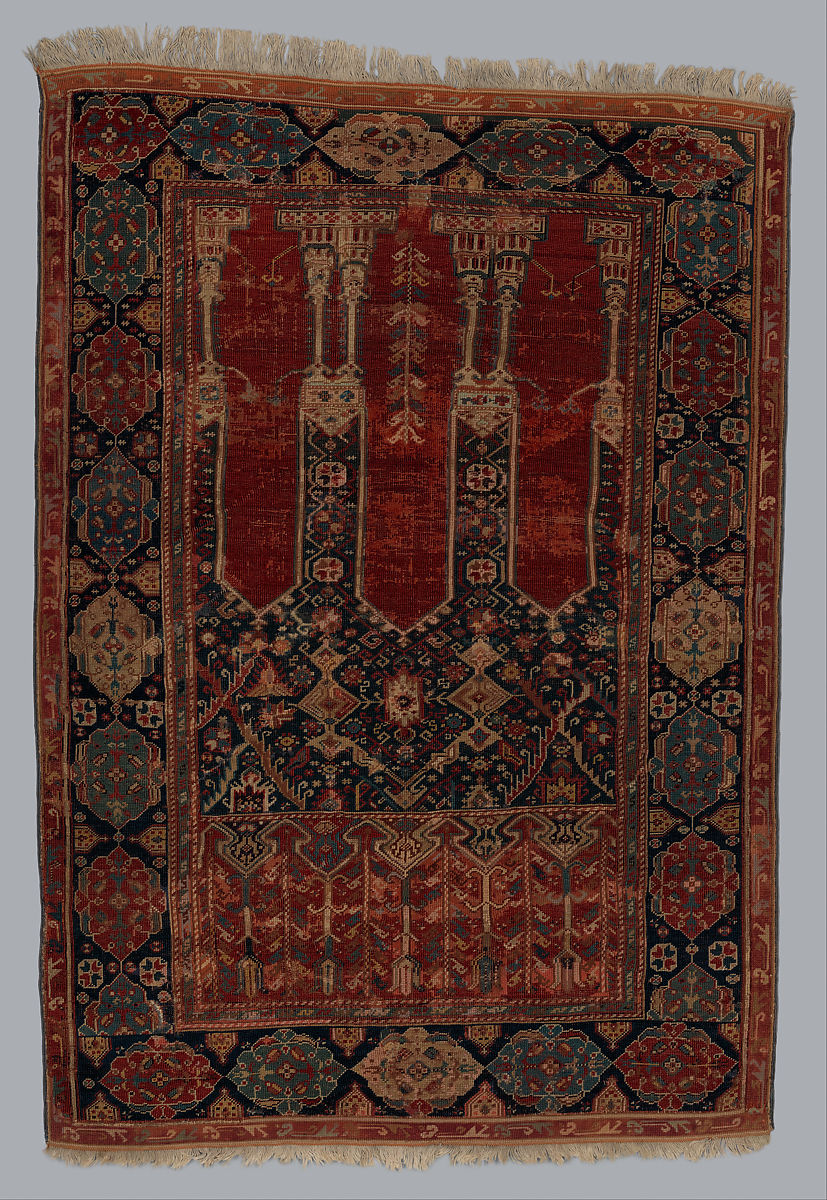Islamic Carpets



Annotation
These three carpets made in the period between the 16th and 18th centuries show two distinct types of carpets produced in the Islamic World for particular culture-specific uses. While carpets in the Islamic World were made for export and global consumption, the type of carpets seen here - one with Persian inscriptions and the other two that with colonnaded designs that were used for the purposes of worship were particular to the Islamic cultures that produced them. In this period, Islamic carpets, across cultures, both in Asia and Europe were highly valued luxury objects that were used for both decorative and utilitarian purposes, and sometimes had symbolic values associated with them.
This source is a part of the Primer: Transcultural History methods module.